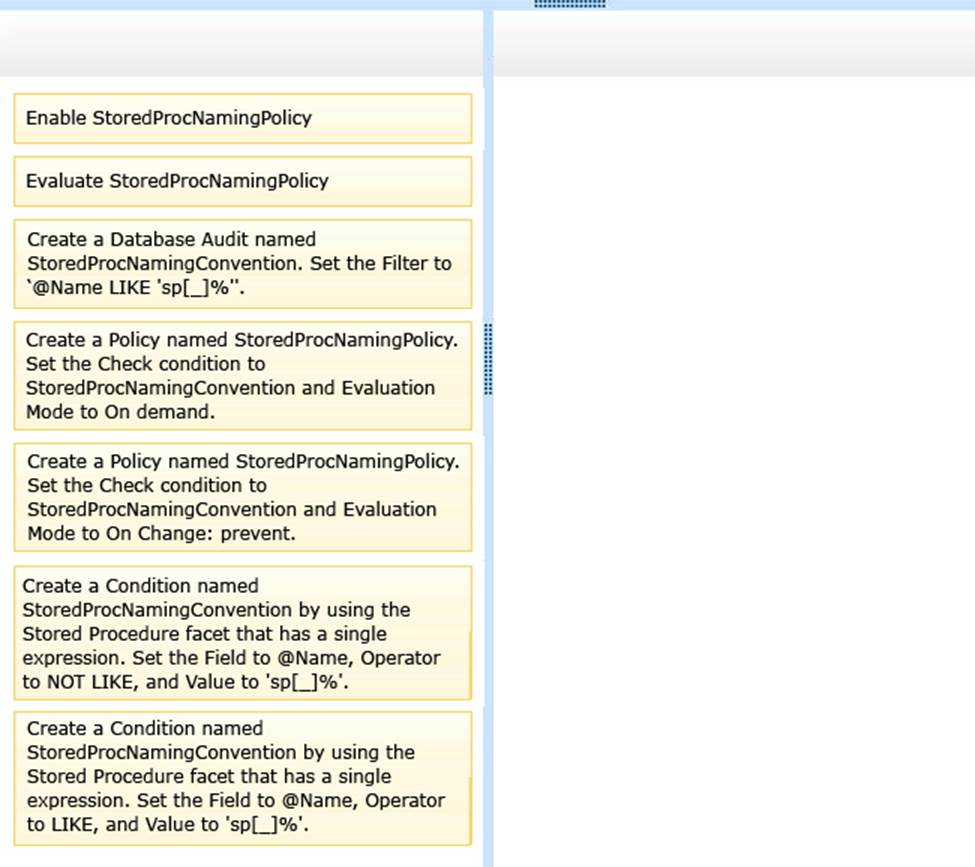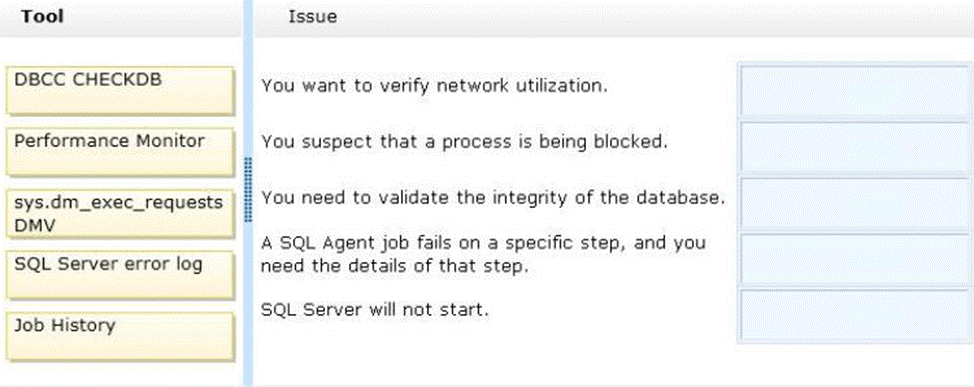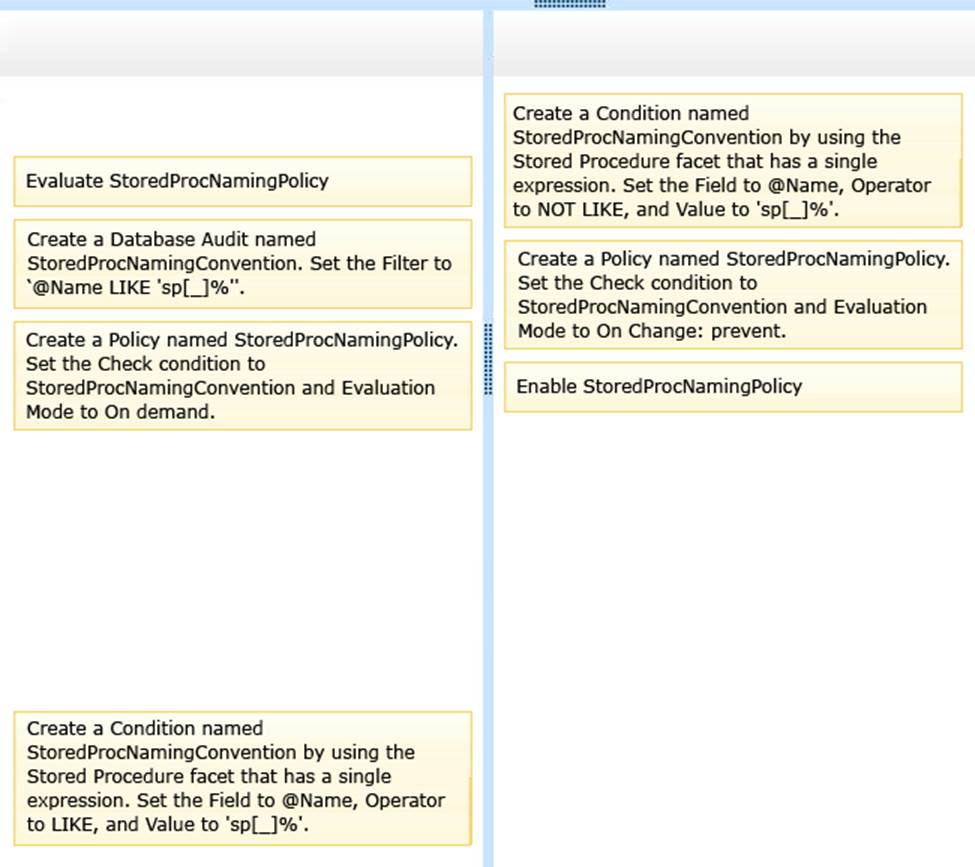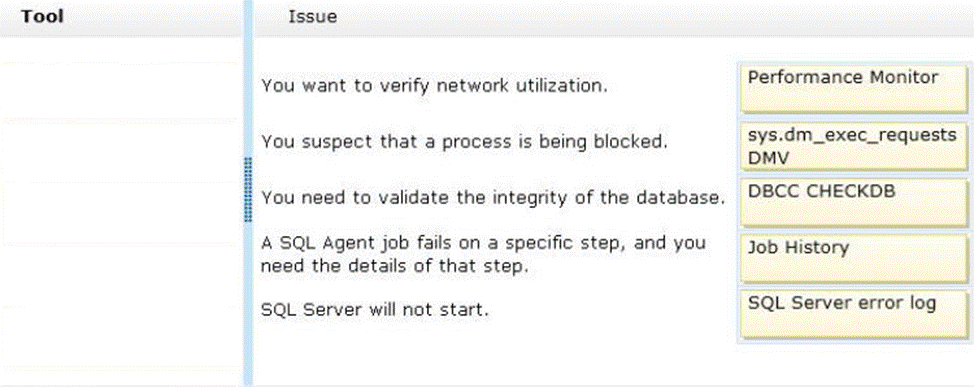Microsoft 70-462 Administering Microsoft SQL Server 2012 Databases Online Training
Microsoft 70-462 Online Training
The questions for 70-462 were last updated at Dec 15,2025.
- Exam Code: 70-462
- Exam Name: Administering Microsoft SQL Server 2012 Databases
- Certification Provider: Microsoft
- Latest update: Dec 15,2025
You administer a Microsoft SQL Server 2012 database.
You configure Transparent Data Encryption (TDE) on the Orders database by using the following statements:

You attempt to restore the Orders database and the restore fails. You copy the encryption file to the original location.
A hardware failure occurs and so a new server must be installed and configured. After installing SQL Server to the new server, you restore the Orders database and copy the encryption files to their original location.
However, you are unable to access the database.
You need to be able to restore the database.
Which Transact-SQL statement should you use before attempting the restore?

- A . Option A
- B . Option B
- C . Option C
- D . Option D
DRAG DROP
You administer a Microsoft SQL Server 2012 server that has multiple databases. You need to ensure that users are unable to create stored procedures that begin with sp_.
Which three actions should you perform in sequence? (To answer, move the appropriate actions
from the list of actions to the answer area and arrange them in the correct order.)

DRAG DROP
You administer a Microsoft SQL Server 2012 server that has multiple databases. You need to ensure that users are unable to create stored procedures that begin with sp_.
Which three actions should you perform in sequence? (To answer, move the appropriate actions
from the list of actions to the answer area and arrange them in the correct order.)

DRAG DROP
You administer a Microsoft SQL Server 2012 server that has multiple databases. You need to ensure that users are unable to create stored procedures that begin with sp_.
Which three actions should you perform in sequence? (To answer, move the appropriate actions
from the list of actions to the answer area and arrange them in the correct order.)

DRAG DROP
You administer a Microsoft SQL Server 2012 server that has multiple databases. You need to ensure that users are unable to create stored procedures that begin with sp_.
Which three actions should you perform in sequence? (To answer, move the appropriate actions
from the list of actions to the answer area and arrange them in the correct order.)

DRAG DROP
You administer a Microsoft SQL Server 2012 server that has multiple databases. You need to ensure that users are unable to create stored procedures that begin with sp_.
Which three actions should you perform in sequence? (To answer, move the appropriate actions
from the list of actions to the answer area and arrange them in the correct order.)

You administer a Microsoft SQL Server 2012 database.
You provide temporary securityadmin access to User1 to the database server.
You need to know if User1 adds logins to securityadmin.
Which server-level audit action group should you use?
- A . SERVER_STATE_CHANGE_GROUP
- B . SERVER_PRINCIPAL_IMPERSONATION_GROUP
- C . SUCCESSFUL_LOGIN_GROUP
- D . SERVER_ROLE_MEMBER_CHANGE_GROUP
You administer a Microsoft SQL Server 2012 instance.
You need to stop a blocking process that has an SPID of 64 without stopping other processes
What should you do?
- A . Execute the following Transact-SQL statement:
EXECUTE sp_KillSPID 64 - B . Restart the SQL Server service.
- C . Execute the following Transact-SQL statement:
KILL 64 - D . Execute the following Transact-SQL statement:
ALTER SESSION KILL ’64’
DRAG DROP
You administer a Microsoft SQL Server database server.
A variety of issues occur from time to time in the production environment. You need to identify the appropriate tool for each issue.
Which tool or tools should you use? (To answer, drag the appropriate tool or tools to the correct issue or issues in the answer area. Each tool may be used once, more than once, or not at all. You may need to drag the split bar between panes or scroll to view content.)

You administer a Microsoft SQL Server database. Users report that an application that accesses the database displays an error, but the error does not provide meaningful information. No entries are found in the SQL Server log or Windows event logs related to the error. You need to identify the root cause of the issue by retrieving the error message.
What should you do?
- A . Flag all stored procedures for recompilation by using sp_recompile.
- B . Create an Extended Events session by using the sqlserver.error_reported event.
- C . Create a Performance Monitor session to capture the SQLServer:SQL Errors object.
- D . Create a SQL Profiler session to capture all ErrorLog and EventLog events.
Latest 70-462 Dumps Valid Version with 301 Q&As
Latest And Valid Q&A | Instant Download | Once Fail, Full Refund



